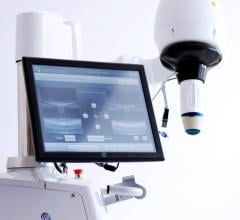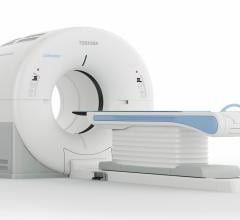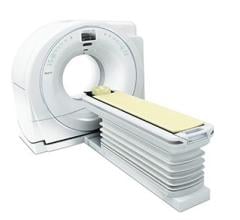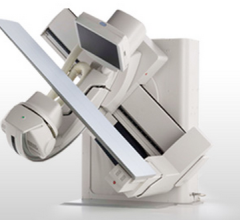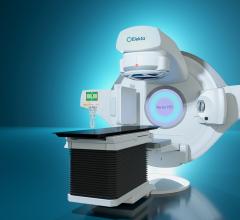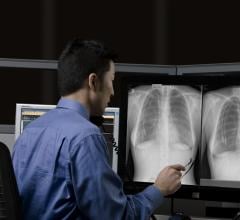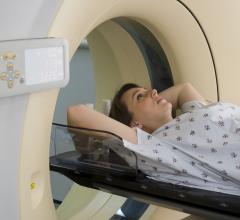Telemis announced that the Groupement Radiologues Associés (GRA) in Bordeaux, France, chose Telemis's picture archiving and communication system (PACS) to renew its PACS system and implement exchange and sharing of medical images within their offices. GRA also chose EDL's RIS (radiology information system) Xplore Web and Cheops Technology's information technology (IT) infrastructure solutions.
What is the true meaning of “patient-centered care”? It’s the latest buzzword in healthcare, but how many of us fully ...
September 18, 2017 — Theraclion and co-lead investigator David Brenin, M.D., from the University of Virginia School of ...
Radiology departments have many different needs and face a wide variety of challenges that can impact their departments ...
Toshiba Medical announced that it will display several new enhancements to its existing computed tomography (CT) technology at the 2017 Radiological Society of North America (RSNA) annual meeting, Nov. 26-Dec. 1 in Chicago.
September 15, 2017 — Hitachi Healthcare Americas Inc. announced it has attained U.S. Food and Drug Administration (FDA) ...
September 15, 2017 — Philips highlighted its newest solution for nuclear cardiology, CardioMD IV, at the American ...
Despite decades of progress in breast imaging, one challenge continues to test even the most skilled radiologists ...
Researchers have demonstrated a new, effective way to precisely identify and localize prostate cancer tumors while protecting healthy tissue and reducing side effects. The new approach utilizes a single molecule designed to bind two proteins with differing affinities in an effort to optimize specific tumor localization — prostate-specific membrane antigen (PSMA) and human serum albumin — thereby enhancing tumor localization for targeted alpha radionuclide therapy. The study is presented in the featured basic article of the September issue of The Journal of Nuclear Medicine.
The southern U.S. sees some of the highest numbers of chronic medical conditions, such as peripheral artery disease which can result in the loss of a limb. To help minimize amputations among their patient population, Capel Surgical Clinic & Vascular Center in Greenwood, Miss., uses advanced X-ray technology to restore blood flow in occluded arteries. Capel Surgical Clinic also uses the Ultimax-i FPD multipurpose system from Toshiba Medical, a Canon Group company, for interventional procedures, diagnostic angiograms and aortagrams.
CapsoVision Inc. recently announced the full U.S. launch of CapsoCloud, an exam management system that allows physicians to extract exam data from the CapsoCam Plus small bowel capsule endoscope system without the need to process capsules post-ingestion.
Bayer Radiology’s Barbara Ruhland and Thom Kinst discuss how radiology departments can address the many different ...
The program for the 2017 Annual Meeting of the American Society for Radiation Oncology (ASTRO), Sept. 24-27 in San Diego, will feature advances in cancer research, including reports from phase II and III clinical trials. Studies that examine innovative treatments, such as immunotherapy, mental health influences on cancer outcomes, and optimal radiation dosing and sequencing, will also be presented at the largest meeting for the field of radiation oncology.
September 13, 2017 — Since announcing the integration of CareSelect Imaging with Epic's enterprise electronic health ...
September 13, 2017 — ClaroNav announced that it has received U.S. Food and Drug Administration (FDA) 510(K) clearance to ...
eHealth Saskatchewan plays a vital role in providing IT services to patients, health care providers, and partners such ...
Nuance Communications Inc. announced that Citizens Medical Center, a critical access hospital in rural Kansas, has completed a hospital-wide deployment of Nuance solutions to reduce transcription costs and improve physician satisfaction, productivity and efficiency. The implementation includes Dragon Medical One, eScription RH, PowerMic Mobile and the PowerShare Network.
Matrix Analytics announced it will clinically validate its LungDirect deep learning and predictive analytics tools for pulmonary nodules. Matrix Analytics has already developed technology for the management of pulmonary nodules. This technology, leveraged with cloud computing and deep learning, will begin clinical validation later this month. The new tool applies an automated cancer classifier identified in conventional chest computed tomography (CT) images to LungDirect's advanced learning algorithms.
Philips announced its presence at the Vascular Interventional Advances (VIVA 17) Annual Conference in Las Vegas from Sept. 11 – 14, 2017, applying advanced technologies and deep clinical insights to address peripheral vascular needs. With the addition of its recent acquisition, Spectranetics, Philips will for the first time highlight its expanded portfolio of interventional X-ray systems, advanced catheters for measurement and therapy, clinical informatics and services, including its Philips Azurion image-guided therapy platform, intravascular ultrasound (IVUS), Phoenix atherectomy system and Spectranetics' Stellarex drug-coated balloon.
September 13, 2017 — Blue Earth Diagnostics announced the upcoming oral presentation of initial results from the FALCON ...
The U.S. Food and Drug Administration’s (FDA) Medical Imaging Drugs Advisory Committee (MIDAC) voted overwhelmingly last week to recommend new labels on gadolinium-based contrast agents (GBCAs) warning of the possibility of gadolinium retention in the body following administration. The labels will further explain that linear GBCAs carry a greater risk than macrocyclic agents, and that there is a greater risk for certain patient populations, according to Medscape.
September 12, 2017 — Fujifilm Medical Systems U.S.A. Inc. announced it has earned a new 10-year contract with a maximum ...
Breast cancer risks associated with breast density are the subject of a new Spanish language video launched recently by DenseBreast-info.org.
September 12, 2017 — The American Society of Radiologic Technologists (ASRT) announced it will donate $10,000 to the ...


 September 18, 2017
September 18, 2017 

